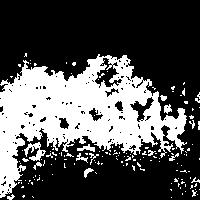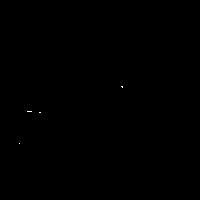Reported by Somya Mawrie ’14

Root (Image credit: Bruce Kohorn’s Cell Biology and Biochemistry class). Single focal plane confocal Green; cell surface protein-GFP, Red lipid membrane dye. Yellow; Red plus green co-localization.
“One thing that many biologists do is revel in the beauty of what we see,” says biology department chair Bruce Kohorn – and right now there’s an entire art exhibit to prove his point, on view in the Fishbowl of the Visual Arts Center. “The Art of Cell Biology” showcases a stunning series of fluorescent microscopic images of plant and animal cells, a sample of those taken by a decade’s worth of students in Kohorn’s Cell Biology and Biochemistry class.

Leaf surface (Image credit: Bruce Kohorn’s Cell Biology and Biochemistry class). Single focal plane confocal. Green: cell surface protein-GFP. Blue: chlorophyll. Red: lipid membrane dye.
How are these images made? It starts with a jellyfish – specifically, a jellyfish containing Green Fluorescent Protein (or GFP), a protein that emits green light when excited by UV rays. Students take GFP that has been isolated from jellyfish and genetically insert it into a study organism, where it fuses with a resident protein. That protein is now “tagged” with green fluorescence, allowing students to track its location via microscopes and biochemical methods.
Meanwhile, other molecules in the cell may show up in other colors – for example, when UV light hits chlorophyll, you see red fluorescence. Where chlorophyll and GFP-tagged proteins overlap, red and green light combines to become yellow. The result? A mesmerizing image, as well as information about the makeup of the cell.

Isolated leaf cell (Image credit: Bruce Kohorn’s Cell Biology and BIochemistry class). 3D confocal. Green: vacuole protein-GFP. Red: chlorophyll.
Students use two kinds of microscopes in this scientific and artistic venture, courtesy of Bowdoin’s cutting edge Cell Biology Imaging facility. There are 7 compound fluorescence microscopes, along with computer capture software – and for sharper images, students use the facility’s NSF-funded confocal microscope. The confocal microscope also captures multiple sequential images that can be combined into a three dimensional visual.
“When you use a confocal microscope, you can sort of superimpose all the different colors and make them super vibrant. You create a really nice aesthetic,” said Noah Gavil ’14, a Biochemistry student who took Kohorn’s Cell Biology class this past fall. “My image is of a plant cell where its cell wall has been stripped. When you take down the cell wall, it expands in all directions. It loses its rectangular shape and becomes more spherical.”
If you’re not convinced that art and science go together, take a visit to the exhibit. The Art of Cell Biology opened on Jan. 27 and will be featured in the Fishbowl of the Visual Arts Center until February 7. “Some of these images look like impressionism, some are technical…there’s a lot of scientific information but also a lot of aesthetics,” said Kohorn. “We appreciate the beauty in our world and it’s nice to share that.”
